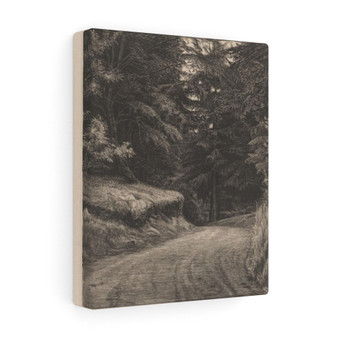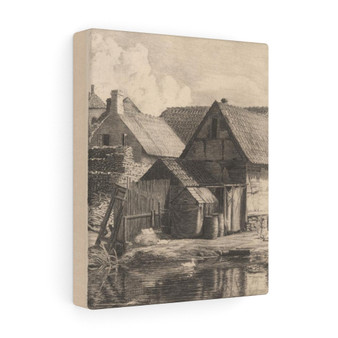Product Description
Fra et romersk osteria (Roman Osteria), 1866 by Carl Bloch.
Original: Statens Museum Kunst.
.: Manufacturing regions: UK, EU
.: Printing method: Giclée, Solvent inkjet
.: Lifelong color guarantee
.: 100% cotton fabric
.: Wooden frame
.: High image quality and detail
.: For indoor use
.: Pre-installed hanging hardware
.: Ensures proper locking to walls
Each custom stretched canvas begins with a 12-color Giclée print, produced from a choice of substrates. We then make a custom wooden frame. The canvas is then hand-finished by our experienced framing team, who ensure each corner fold is perfectly smooth and tight.
Designed for indoor use, custom stretched canvas prints are made from treated cotton - providing the smoothest of matte surfaces for exceptional design vividity. A combination of <b>quality and durability</b>, these hangings come with a <b>lifelong color guarantee; there's significant confidence in their withstanding the test of time</b>. On the backside, pre-installed hanging hardware <b>ensures proper locking to walls</b>.
Colors may vary slightly during the printing process.
#styleathome #homedecor #paintingsforhome #classicalart #gift #holidaygift #artlovergift #wallartprint
Description:
‘In the Roman osteria‘ was commissioned by a good friend and supporter by Carl Bloch, Moritz G. Melchior, a merchant. Bloch finished the painting in 1866.
Moritz is seen in the background of this painting, talking to one of his friends. One of the guests seated at the table with him is the painter himself, with his back to the viewer.
The primary characters in the painting, include village folk of the Danish countryside. Of the three seated at one table, the two women appear to engage with the viewer agreeably. The male patron seated at that table appears to glare at the viewer rather irritably.
It is said that knives and forks are brandished freely. The cat, clothes, the osteria is depicted in striking realism, as is a common feature among Bloch’s paintings in this genre.
Bloch was well known and sought out by the clergy and royalty of the time for religious and somber paintings. However, he is today well known for his paintings depicting the common folk in amusing scenes such as the one in this painting.
There are 2 other well-known interpretations of the Osteria scene, one by the master’s teacher Wilhelm Marstrand.
This painting, the Italian Osteria Scene from 1848 (Ny Carlsberg Glyptotek), also contains two girls inviting the viewer into the Osteria with one holding up a glass of wine.
The other interpretation is that of a painting of Italian Osteria by Polish-Danish painter, Elisabeth Jerichau Baumann. There are apparently three known variations of that painting.
This painting was one of the popular genres at the time, that depicted rural life. The painting was unframed and was purchased by the museum.
{{PD-US-Expired}]


























